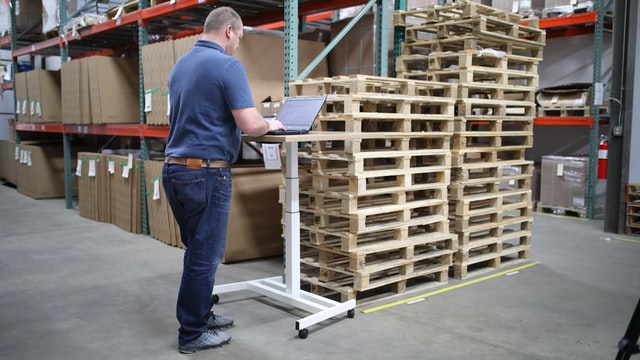
Automation is revolutionising industries across the globe. But some small and mid-sized enterprises (SMEs) are reluctant to embrace it fully. There's a great deal of potential in automating warehouse environments, for instance, and this would benefit entire supply chains. Yet, small warehouse businesses often fail to understand the types of automation available to them and their benefits.
What Is Warehouse Automation?
To clarify, warehouse automation consists of automating the way that inventory moves into, within, and out of the warehouse, with as little human assistance as possible. It can involve using technology as basic as conveyor belts and carousels. Or it can use fully mechanised warehouse robotics, with mini-loaders, pallet shuttles, carrier vehicles, drones, automated sortation systems, automated guided vehicles (AGVs), and autonomous mobile robots (AMRs).
Automation can also involve using pick-to-light or voice picking software systems that guide pickers to the shelf using GPS and RFID technology. It might come with machine learning capabilities and data analytics. Or it can be any combination of these. But whatever the formula, the typical automation project will seek to do away with repetitive and labour-intensive physical duties, which can range from manual data entry to stocking shelves.
Benefits Of Warehouse Automation For SMEs
Automation opens up a warehouse operation to new possibilities. The fact that investing in automation comes with a competitive return on investment and low inventory carrying costs means that the business can quickly redirect its resources to new shipping models, growth opportunities, and scaling-up strategies. But there are also countless immediate benefits as well for businesses that aren't ready to dream big yet:
- Increased warehouse throughput, productivity, and efficiency.
- Better resource and space utilisation.
- Improved customer service, employee satisfaction, and staff turnover.
- Lower costs associated with labour, handling, storage, and operations.
- Minimal manual labour, human error, and health & safety incidents.
- Reduced stockout events, inventory loss, and shipping errors.
- Greater inventory control, order fulfilment accuracy, and material handling.
- Enhanced data accuracy and analysis.
Warehouse Automation Hesitancy
Automation can simplify receiving, return processing, storing, picking, sorting, packaging, shipping, and replenishment. However, most warehousing businesses don’t have pockets as deep as Amazon, so there's the issue of high up-front costs. While the norm for fully automated systems is a 5-10 years' wait for a return on investment, small-scale projects can have their pay back in a matter of months rather than years. Also, software automation using cloud-based technology can be implemented gradually, making the transition seamless and the costs easier to bear.
Strategies For Boosting Warehouse Productivity
If you're ready to expand your horizons and are looking for ways to save money and improve productivity in your warehouse, please make sure to download a copy of our free Automation guide. In it, you'll find the most pertinent and current information about warehouse automation strategies. For all questions, please give one of our logistics consultants a call for a no-obligation chat.
Image source: Unsplash



